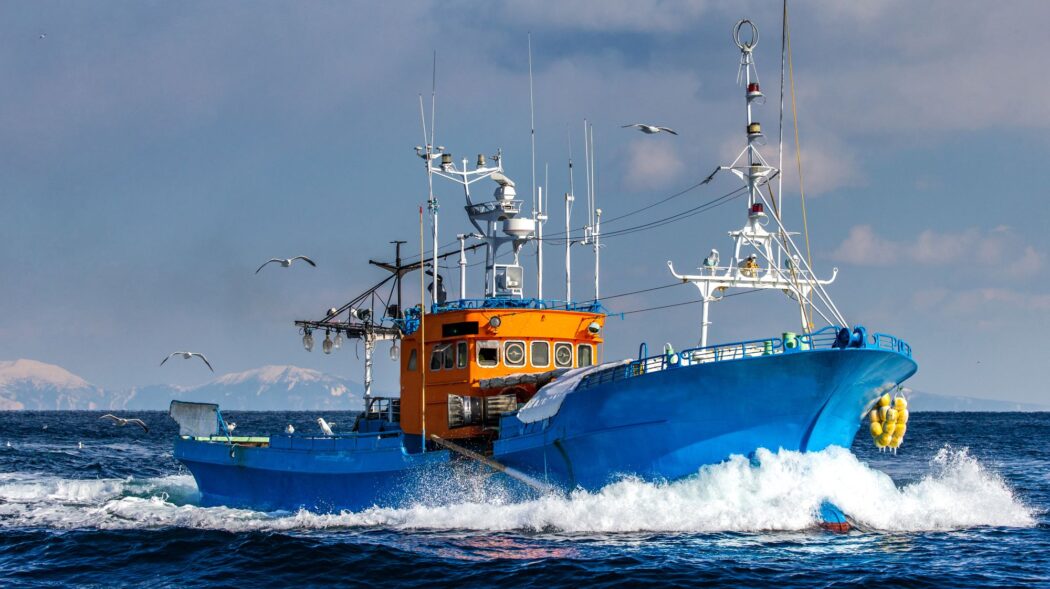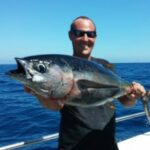How To Stabilize A Fishing Boat

When it comes to fishing, a stable boat is crucial for a safe and enjoyable experience on the water. Rickety boats can make fishing trips challenging, uncomfortable, and even dangerous. Whether you’re an experienced angler or a novice, knowing how to stabilize your fishing boat is crucial.
This article will teach you about the critical factors that influence boat stability. You’ll also learn practical tips and techniques to help you maintain balance, navigate rough waters, and make the most of your fishing adventures.
By implementing these tips, you’ll know how to stabilize your fishing boat and confidently enjoy your time on the water.
Understanding Boat Stability
Boat stability is a concept that is essential for maintaining a safe and comfortable fishing boat. It refers to the ability of a boat to maintain an upright position and resist tipping or rolling when subjected to external forces. You can even hire professionals to help stabilize your boat, but you must consider the Seakeeper installation cost or costs from similar businesses for the best results.
To understand boat stability, it’s important to know the factors that can affect it. By comprehending the principles of weight distribution and center of gravity, you can proactively manage these factors to stabilize your fishing boat, creating a safer and more comfortable environment for your angling pursuits.
Prepare Your Fishing Boat
Proper loading and weight distribution techniques are essential for stabilizing your fishing boat. By strategically distributing weight throughout the vessel, you can prevent it from becoming unbalanced or listing to one side. Placing heavy gear, such as coolers or tackle boxes, in the center and lower parts of the boat helps maintain a lower center of gravity, improving stability. Additionally, evenly distributing passengers and cargo across the boat prevents any area from overloading, ensuring a more balanced and controlled ride.
Properly organizing your fishing equipment and supplies is essential for maintaining balance on your fishing boat. Storing gear in designated compartments or using storage containers helps keep the boat clutter-free and ensures that items are securely placed. By organizing your fishing equipment, such as rods, reels, and bait, you reduce the risk of shifting weight and improve the overall stability of the boat. Moreover, arranging items balanced prevents excessive movement during transit, minimizing the chances of the ship becoming unstable.
Securing loose items on the boat is crucial for both safety and stability. Things such as fishing gear, coolers, or personal belongings should be adequately fastened or stored to prevent them from shifting or falling overboard. Loose objects pose a safety hazard and disrupt the boat’s balance and stability. Storage compartments, bungee cords, or netting can help secure loose items and maintain a tidy and stable fishing environment. Taking the time to secure loose items ensures a more enjoyable and hassle-free fishing experience, allowing you to focus on the task.
Trim And Ballast
Understanding the concept of trim and its impact on boat stability is essential for stabilizing your fishing boat. Trim is the angle of the boat’s hull concerning the water’s surface. Proper trim adjustment ensures the boat maintains an optimal balance and minimizes resistance, improving stability and performance. By achieving the correct trim, you can enhance fuel efficiency, reduce bow rise, and mitigate the risk of broaching.
You can adjust the trim of your fishing boat using various methods, such as trim tabs, outboard motor tilt, or shifting weight. Trim tabs are adjustable surfaces on the transom that can be lowered or raised to fine-tune the boat’s trim angle. Additionally, adjusting the tilt of the outboard motor can affect the boat’s trim. Shifting weight within the ship, such as moving passengers or gear forward or backward, also helps adjust trim and improve stability. Experimenting with these trim adjustment techniques allows you to find the optimal balance that suits your boat and prevailing conditions.
Utilizing ballast techniques can significantly enhance stability in varying conditions. Ballast refers to adding weight to the boat to increase stability and counteract any imbalance caused by external factors such as wind or waves. This can be achieved by strategically placing ballast bags, sandbags, or additional weight near the boat’s center of gravity. Adjusting the ballast of your fishing boat can significantly improve its resistance to tipping or rolling, resulting in a safer and more comfortable fishing experience.
Optimizing Buoyancy
Buoyancy refers to the upward force exerted by a fluid (in this case, water) on a submerged object. It acts as a counterforce to gravity, keeping the boat afloat. Understanding the principles of buoyancy allows you to ensure that your fishing boat remains stable by displacing enough water to support its weight. By doing so, you can maintain the correct balance and prevent the boat from tipping or rolling in the water.
Checking and maintaining proper flotation devices is essential for optimizing buoyancy and boat stability. Flotation devices, such as life jackets or buoyancy compartments, provide additional buoyant force and help prevent the boat from sinking in the event of a mishap. Regularly inspecting and maintaining these flotation devices ensures they are in good working condition and can effectively contribute to the boat’s stability and safety.
Using flotation aids and foam can be an effective way to enhance the stability of your fishing boat. Floatation aids, such as inflatable buoys or foam blocks, can be strategically placed within the ship to provide extra buoyancy and improve stability. Foam inserts can be installed in compartments or under seating areas to displace water and increase buoyant force. By utilizing these flotation aids and foam, you can create a safer and more secure environment for your fishing excursions, while also enhancing your boat’s overall buoyancy and stability.
Handling Rough Waters
When faced with choppy or rough waters, proper techniques are crucial for maintaining stability on your fishing boat. Navigating such conditions requires a combination of skill and knowledge. For example, keeping a steady and controlled course instead of making abrupt turns can help you maintain stability. You should also anticipate and approach waves and swells at optimal angles, usually around 45 degrees, to enable the boat to ride over them more smoothly, reducing the risk of instability and capsizing.
Adjusting speed and throttle control is another critical aspect of handling rough waters and minimizing instability. Slowing down your boat’s speed in challenging conditions provides better control and stability, reducing the impact of waves and swells. Similarly, smoothly adjusting the throttle and avoiding sudden decelerations can help maintain peace and prevent sudden shifts in weight distribution. By employing these techniques, you can navigate rough waters more effectively, ensuring a safer and more enjoyable fishing experience.
Conclusion
Stabilizing a fishing boat is essential for a safe and enjoyable fishing experience. By understanding boat stability, you can create a stable and controlled environment on the water. Optimizing trim and ballast techniques allow you to fine-tune the boat’s balance and stability in varying conditions.
By utilizing the techniques discussed in the article, you can achieve a stable and controlled environment on the water, fine-tune your boat’s balance and stability in varying conditions, and ultimately enhance your fishing experience with greater safety and confidence.
As an Amazon Associate, Fishermen's Angle earns from qualifying purchases. We get commissions for purchases made through links in this post.

